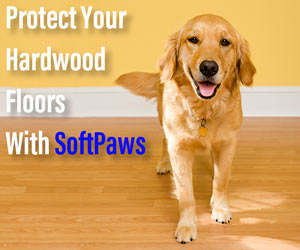What to Do If Your Puppy Hates to Be Brushed

Does your puppy do everything possible to get away from the brush when all you're trying to do is keep his fur shiny and knot-free? How can you get your pup to allow you to brush him without a fuss?
Why Is Brushing Scary for Some Dogs?
Fur brushing is scary for some puppies because they've had a negative experience with a brush or something like one. Perhaps their skin was pulled on when a knot was brushed out. Or maybe someone brushed too hard, and it was unpleasant.
The good news is that you can help your puppy feel better about brushing. And you need to do that because your dog must accept routine brushing throughout his life. It helps keep tangles out of the fur and massages the skin, which keeps good blood flow and helps distribute skin-enhancing oils.
How to Help a Dog That Dislikes Being Brushed
The key to helping your dog accept and like being brushed is to associate it with something good. If he dislikes being brushed, it's probably because the procedure has been associated with something bad in your dog's mind.
Note: If your dog didn't mind brushing but suddenly seems afraid or dislikes it, have him checked out by a veterinarian. It could indicate pain in the joints or muscles or a skin condition.
First, make sure you have a good brush with bristles that are not too hard. If you have the wrong brush or one with very stiff bristles, it could be hurting your dog. What type of brush you need will depend on your dog's size and fur type. A groomer may be able to help you choose if you're not sure. Paw Brothers brushes are built to be gentle while getting your dog's fur into excellent condition, and they work well for most dogs.
You may wish to use a canine-specific detangling product, which can help prepare your dog's fur for easier brushing with less pulling.
Make sure you're always gentle when brushing your dog. If you need to get out a mat, do so gently, working at it close to the body from different angles until it loosens. Don't yank or pull the fur away from the body, which can pull and hurt.
Never use scissors to remove a mat from your dog's fur. It's too easy to lacerate the skin, and that could really set your dog back on accepting brushing and other grooming. If your dog has mats you can't get out, make an appointment with a professional groomer to have them shaved out.
Once you're sure you have the right brush and technique, start associating the brush with positive things in your puppy's mind. Here are the steps:
- Start by setting the brush out on the floor and letting him check it out. Give praise and a treat when he goes close to look at or sniff it.
- Once your puppy doesn't mind seeing the brush lying around, sit on the floor holding it. Give praise and treats when your pup comes to you. Don't move the brush toward him.
- Once your puppy is comfortable coming to you while you're holding the brush, start touching him with the brush briefly and rewarding when he's calm about it.
- Over time, gradually increase so you are doing more brushing before giving a treat.
Each step could take several sessions. Don't rush it.
Stay positive. Don't ever yell at your puppy during training, which will create even more negative associations with the brush.
You May Also Like These Articles:
Disclaimer: This website is not intended to replace professional consultation, diagnosis, or treatment by a licensed veterinarian. If you require any veterinary related advice, contact your veterinarian promptly. Information at DogHealth.com is exclusively of a general reference nature. Do not disregard veterinary advice or delay treatment as a result of accessing information at this site. Just Answer is an external service not affiliated with DogHealth.com.
Notice: Ask-a-Vet is an affiliated service for those who wish to speak with a veterinary professional about their pet's specific condition. Initially, a bot will ask questions to determine the general nature of your concern. Then, you will be transferred to a human. There is a charge for the service if you choose to connect to a veterinarian. Ask-a-Vet is not manned by the staff or owners of DogHealth.com, and the advice given should not delay or replace a visit to your veterinarian.



